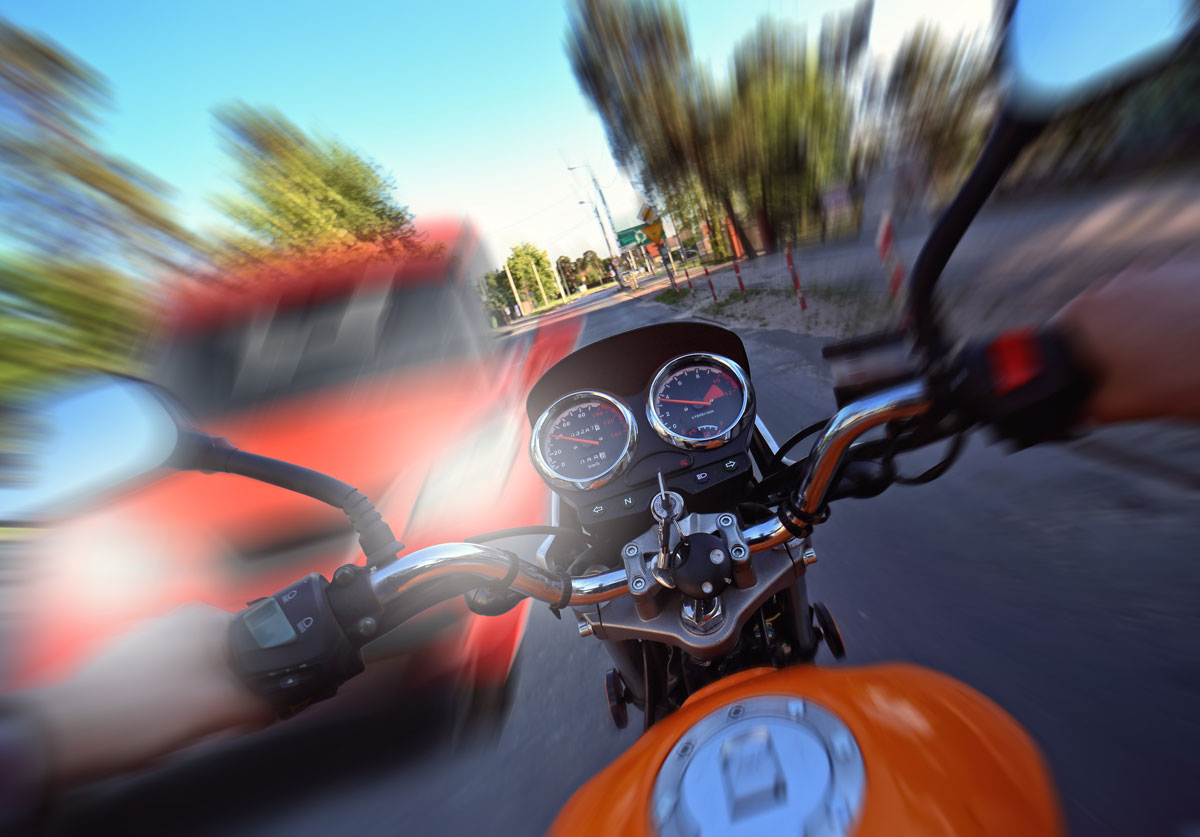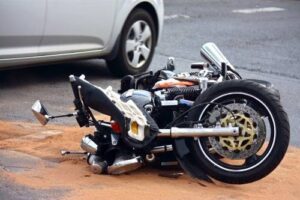
Riding Motorcycles Safely in Nevada
The Las Vegas personal injury attorneys at Shook & Stone have aided motorcycle accident victims and their families in recovering losses from auto accidents that were not their fault. Through their extensive experience in handling such cases, they have observed that prioritizing safety can help reduce risks for both motorcycle riders and other motorists. Here are some helpful tips.
For Riders
 To stay safe on your motorcycle, it’s important to be skilled in riding. Take a motorcycle safety course if you haven’t already to learn important skills like defensive riding. You can also practice on closed roadways or parking lots to become more comfortable with your bike.
To stay safe on your motorcycle, it’s important to be skilled in riding. Take a motorcycle safety course if you haven’t already to learn important skills like defensive riding. You can also practice on closed roadways or parking lots to become more comfortable with your bike.- Motorcycle drivers are vulnerable and need protective gear. Invest in quality gear like boots, gloves, pants, and jackets. Always wear a DOT approved helmet as it’s the law in Nevada.
- Check your brakes, tire pressure, lights, and signals frequently. It’s also a good idea to equip your motorcycle with a horn or spotlight for better visibility.
- If the bike has been unused for a while, a more thorough check is advised.
- Be aware of your surroundings at all times. Always be on the lookout for any potential hazards such as debris or animals in the road.
- When you’re driving a motor vehicle near a motorcycle, it’s important to be aware of their presence and exercise extra caution. Allow a larger following distance on public roads and be extra aware of blind spots.
- Consider weather conditions before riding as they can affect visibility, grip, and other factors that can contribute to an accident. Bad weather contributes to motor vehicle accidents for all types of vehicles.
- Motorcycle accidents frequently occur due to the fault of drivers in passenger vehicles.
- To prevent these accidents, it is important to remain attentive of other vehicles on the road. This can be achieved by regularly monitoring nearby vehicles, utilizing turn signals, monitoring lane changes, and refraining from tailgating.
- Studies indicate that a significant number of motorcycle accidents involve riders who were impaired. It is important to prioritize safety by refraining from riding while under the influence to protect oneself and others on the road.
- Braking Techniques Always follow proper braking techniques, such as applying the front brake first and then the rear. This reduces the risk of skidding or losing control. It is also important to be aware of road conditions ahead and reduce speed accordingly for optimal safety.
- To increase safety while riding a motorcycle, it is recommended to avoid lane splitting, riding in blind spots, and weaving through traffic in order to reduce the risk of collisions and increase visibility to other motorists.
For Motorcycle Passengers
- Passengers on motorcycles should always wear the same protective gear as the driver.
- This includes a DOT approved helmet, gloves, boots, and other clothing.
- It is important to maintain a proper grip while riding and remain still in order to avoid any distractions that could potentially cause an accident.
- Keep your feet firmly planted on the foot pegs and keep hands gripping the handle bars or seat.
- Passengers should also be aware of their surroundings, following the same safety advice as the driver.
- In addition, passengers should refrain from distracting the driver and remain aware of any potential hazards in the road.
For Motorists
- Motorcycles are smaller than passenger vehicles and can be hard to see. Drivers should be aware of their surroundings, especially at intersections, when pulling into traffic, or when changing lanes.
- Distractions should be avoided, and it’s important to look twice. Motorcycles often have loud exhaust systems, so keep an ear out for approaching riders.
- When driving near or passing motorcycle riders, it is important to provide adequate space on both sides and only pass when it is safe. It is recommended to avoid tailgating and maintain ample distance when following a rider.
- Learn more in the Nevada DMV Motorcycle Operator Manual and the Nevada Motorcycle Equipment Requirements site. Also refer to the Operator’s Manual’s safety checklist:
External Link: https://dmv.nv.gov/pdfforms/dlbookmotorcycle.pdf
These tips aren’t always enough to prevent a serious motorcycle injury accident, unfortunately.
If you have been injured in a Nevada motorcycle crash caused by a negligent driver, the skilled Las Vegas injury attorneys at Shook & Stone can inform you of your legal rights and help you pursue compensation for the losses and damages you’ve suffered. Call one of our Las Vegas motorcycle accident lawyers today for a free consultation at 702-570-0000.
 Sunny
Sunny 6 Killed, at Least 20 Injured in Big Rig Amtrak Train Crash
6 Killed, at Least 20 Injured in Big Rig Amtrak Train Crash 